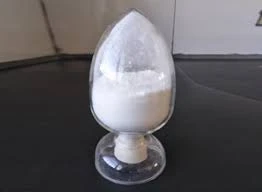The Significance and Applications of 2,2-Dimethyl-1,3-propanediol
2,2-Dimethyl-1,3-propanediol (also known as neopentyl glycol, or NPG) is a chemical compound that has garnered considerable attention in industrial and research contexts due to its unique structure and properties. Characterized by a saturated hydrocarbon chain, this compound serves as an essential building block in the synthesis of various materials and chemicals.
Chemical Structure and Properties
The molecular formula of 2,2-dimethyl-1,3-propanediol is C5H12O2, indicating it contains five carbon atoms, twelve hydrogen atoms, and two oxygen atoms. The key feature of this compound is its two hydroxyl (-OH) groups, which bestow it with diol characteristics, making it an important alcohol in chemical synthesis. The presence of the two methyl groups at the second carbon position distinguishes it from other glycols, contributing to its unique physical and chemical attributes.
2,2-Dimethyl-1,3-propanediol is a colorless and odorless liquid at room temperature, with a moderate viscosity and a relatively high boiling point, which makes it a useful solvent and a medium for various reactions. Its ability to form hydrogen bonds due to the hydroxyl groups enhances its solubility in water and other polar solvents, further expanding its range of applications in different industries.
Industrial Applications
One of the most significant applications of 2,2-dimethyl-1,3-propanediol lies in the production of unsaturated polyester resins. These resins are widely used in composite materials, automotive parts, and various construction applications due to their light weight, durability, and resistance to corrosive environments. The inclusion of neopentyl glycol in these formulations helps improve the mechanical properties and thermal stability of the resins, making them more suitable for demanding applications.
2,2-dimethyl-1,3-propanediol

Moreover, it is a vital ingredient in the manufacture of coatings, adhesives, and sealants. Its capability to enhance adhesion and flexibility while providing resistance to degradation under various environmental conditions make it a preferred choice in many industrial formulations. Coatings that incorporate 2,2-dimethyl-1,3-propanediol provide superior performance for surfaces exposed to harsh conditions.
Another notable application of this compound is in the production of thermoplastic polyurethanes, which are used in elastomers, films, and fibers. The presence of neopentyl glycol contributes to the hardness and thermal stability of these materials, which allows for their use in diverse applications ranging from textiles to automotive parts.
Role in Pharmaceuticals and Personal Care
In the realm of pharmaceuticals and personal care products, 2,2-dimethyl-1,3-propanediol is becoming increasingly relevant. Its hydrophilic nature makes it a useful solvent and stabilizer in drug formulations. As researchers continue to explore the interactions of various compounds, neopentyl glycol may serve as a significant ingredient in enhancing the bioavailability of certain drugs.
In personal care products, this compound is often included in formulations for skincare, haircare, and cosmetic applications. Its properties as a humectant help attract moisture, thereby improving skin hydration. Furthermore, its non-irritating nature makes it an excellent choice for sensitive skin products, assuring consumers of safety and efficacy.
Conclusion
In summary, 2,2-dimethyl-1,3-propanediol is a versatile compound with significant implications across various industries. Its unique chemical structure and properties facilitate its use in the production of resins, coatings, elastomers, pharmaceuticals, and cosmetics. As research and development continue to advance, the potential applications of this compound are likely to expand even further, paving the way for innovations that could enhance material performance and product efficacy. Understanding and harnessing the capabilities of 2,2-dimethyl-1,3-propanediol not only contribute to current industrial practices but also inspire future advancements in technology and materials science.

